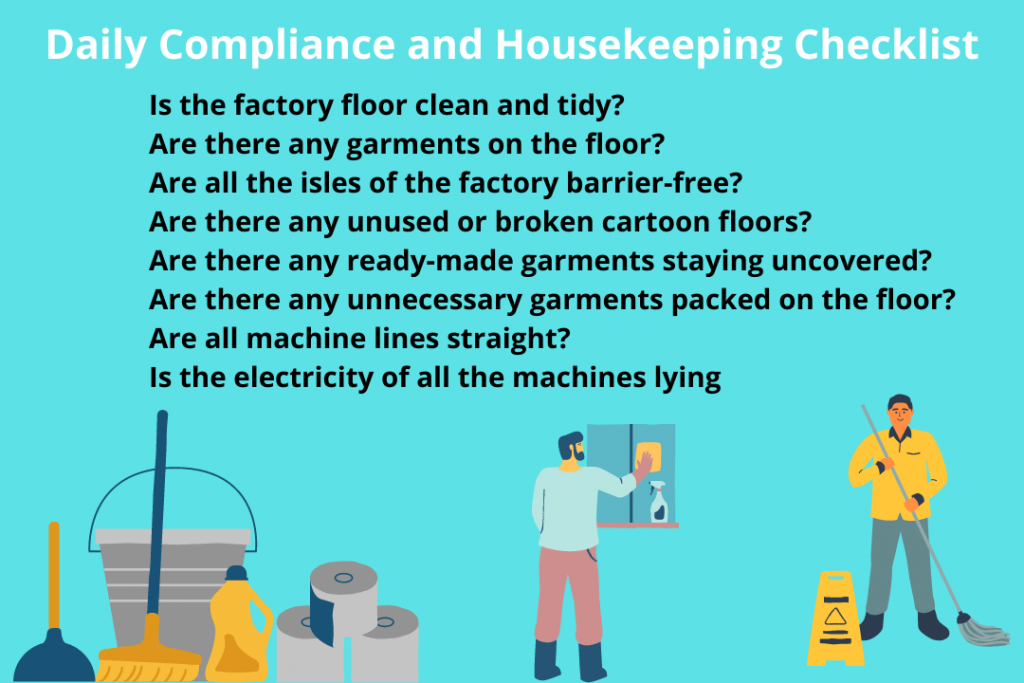16 Departments of Garments Industry and Their Key Activities
The garment business plays a vital role in our lives because it manufactures clothes for our everyday use. But do you know how it’s all put together? Several departments in the garment industry operate differently from each other but still offer you top-quality apparel. From designing stylish outfits to making them in bulk and ensuring top-notch quality, the garment industry involves a step-by-step process. It’s the behind-the-scenes journey of turning ideas into the clothes we love to wear. If you don’t have enough knowledge about the operations and departments of the garment industry, then this blog will give you some brief knowledge about that. In this blog, we will be discussing different departments of a garment factory and how they operate. In this article, I present 16 Departments of Garments Industry and Their Key Activities.
16 Operational Departments of Garments Industry
- The Pre-Production
- The Design Department
- Merchandising
- The Fabric Sourcing
- The Patternmaking
- Sampling
- The Production Department
- Cutting
- Sewing
- Finishing
- Post-Production Department
- Quality Control
- Packaging
- Shipping
- Customer Service
- Marketing

Detail Key Activities of 16 Operational Departments of Garments Industry
Let’s roll in the world of the garment industry and how it operates
1. The Pre-Production
In the clothing industry, pre-production is similar to laying out a blueprint before constructing a home. Final designs, sourced materials, made patterns, and prototypes are all developed during this initial and critical step. This guarantees that the finished product fulfills the required quality and criteria and sets the stage for a smooth production process.
The following are the steps;
2. The Design Department
The design department leads in the initial stages before production kicks in. This team creates the initial vision and visual blueprint of the garment. They collaborate closely with the marketing crew, keeping an eye on the latest trends and understanding what consumers love. Their mission? To cook up creative designs that match the brand’s personality. It’s all about putting together the perfect outfit recipe to capture hearts and turn heads when it finally hits the shelves.
3. Merchandising
This is the most important department among all other Departments of Garments Industry. The merchandising department is all about overseeing the journey of a product from its design birth to reaching the customer’s hands. These folks jump into sales numbers, watch inventory, and ensure that the production team develops the right amount of each item to keep customers happy. They’re the behind-the-scenes maestros, ensuring that what’s created matches what people want and need, ensuring the entire product cycle is a smooth and satisfying experience for everyone involved.
4. The Fabric Sourcing
The fabric sourcing department is responsible for locating and acquiring premium fabrics that fit the budget and design specifications. They bargain with vendors, evaluate product quality, and guarantee that the material is delivered in the appropriate amounts and on schedule.
5. The Patternmaking
The patternmaking department converts the designer’s sketches into precise technical patterns that specify the measurements and construction of the garment. They consider the type of fabric, seam allowances, and wearability to guarantee a cozy and well-fitting outfit.
6. Sampling
The sampling department designs the garment’s prototypes using authentic materials and trimmings. They make modifications in response to input from the merchandising and design teams to guarantee that the sample faithfully depicts the finished item.
7. The Production Departments of Garments Industry
The core of the process in the apparel industry is production, where knowledgeable people turn fabrics, trimmings, and designs into prototypes or completed clothes. It’s a systematic and dynamic procedure with several steps;
8. Cutting
The cutting department carefully cuts the fabric using patterns, guaranteeing that the most material is used. They reduce waste and make exact cuts using cutting equipment and laser technology.
9. Sewing
The sewing department assembles the garment pieces using sewing machines and various sewing techniques. Highly skilled sewers are responsible for stitching seams, attaching closures, and completing the garment’s construction.
10 . Finishing
This Finishing department works on finishing clothes by applying final touches, including pressing and embroidery, embellishments, and packaging. They make sure that the garment meets the industry standards and desired quality.
11. Post-Production Department
Post-production is the last phase that guarantees finished garment quality control, packaging, and shipment. It’s a crucial phase that guarantees the clothing fulfills the required standards and is delivered to clients on schedule.
12. Quality Control
The quality control team carefully examines every item of clothing to look for flaws or irregularities. They guarantee the product satisfies the brand’s overall look, fabric quality, and stitching requirements.
13. Packaging
The packaging section ensures that the clothes are appropriately labeled, folded, and packaged for shipping to avoid packaging defects in garments. They use sturdy packing materials to safeguard the clothing while it is transported.
14. Shipping
The shipping department manages the logistics of transporting the garments to retailers or directly to consumers. They coordinate with shipping providers, ensure timely delivery, and good shipping containers and handle shipment-related issues.
15. Customer Service
The customer service department handles consumer inquiries, complaints, and refunds. To ensure clients are happy with their purchases, they offer assistance with sizing, fit, and product difficulties.
16. Marketing
The marketing division uses influencer marketing, social media, and advertising, among other platforms, to sell the brand and its goods. They design marketing initiatives that connect with the intended audience and increase revenue.
Conclusion
Whether you are an amateur or not, I hope that at the end of this blog, you have sufficient knowledge about the different departments and how they operate to make a piece of clothing for you. We mentioned here 16 departments of garments industry, there could be some more other departments, but not missing any key sections.
- Additionally, You would love to read: Different Departments of Apparel Industry and their Functions
- Finance Department in the Garments Industry
- Commercial Department in the Garment Industry


